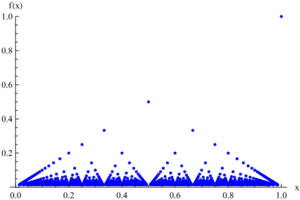CRN 12929
From Classes
(Difference between revisions)
HelmutKnaust (Talk | contribs) (Created page with "''Tiger gotta hunt. Bird gotta fly.''<br> ''Man gotta sit and wonder why, why, why.''<br> ''Tiger gotta sleep. Bird gotta land.''<br> ''Man gotta tell himself he understand.''...") |
Revision as of 11:42, 17 July 2012
Tiger gotta hunt. Bird gotta fly.
Man gotta sit and wonder why, why, why.
Tiger gotta sleep. Bird gotta land.
Man gotta tell himself he understand.
Kurt Vonnegut Jr.
Contents |
Syllabus
- Course: Math 3341 (Introduction to Analysis) - MW 16:00-17:20 in BUSN 329 (BELL 130A starting on 9/12/2011)
- Instructor: Dr. Helmut Knaust, Bell Hall 219, tel. 747-7002, e-mail: hknaust@utep.edu
- Office Hours: M 15:00-15:50, R 13:30-15:00, or by appointment.
- Textbook: Stephen Abbott: Understanding Analysis, Springer-Vlg. The book is available at Amazon for $44.37 (7/27/2011).
- Prerequisites: The course requires a certain level of mathematical maturity that you have gained by having thoroughly and successfully grappled with the concept of infinity in MATH 1312 as well as the basics of logic and proofs in MATH 3325.
- Course Objectives: Real Analysis is "Calculus with Proofs". You should expect (and I will expect) that you make considerable progress in the following areas:
- Become familiar with the fundamental results of "Analysis on the Real Line" (highlights of the course include the Intermediate Value Theorem, the Mean Value Theorem and possibly the Fundamental Theorem of Calculus);
- Thoroughly understand the definitions of the basic concepts of Analysis such as convergence, continuity, differentiation and integration;
- Continue to develop your ability to use the method of proof to establish these fundamental results.
- Be able to recognize a rigorous proof when you read or see one. Conversely, be able to pick out the weak spot(s) in a less rigorous argument. Be able to fill in details in a sketchy proof.
- Once you have devised a proof, be able to write it down in a clear, concise manner using correct English and mathematical grammar.
- Tests: Three exams will be given on the following Wednesdays: September 28, October 19 and November 16. Each exam counts 20% of your grade.
- Homework. I will regularly assign written homework. The homework will be graded.
- Class Participation and Presentations will contribute 15% towards your grade.
- Final Examination: The final exam on Monday, December 5, 13:00-15:45, is comprehensive and mandatory. It counts 25% of your grade.
- Time Requirement. I expect that you spend an absolute minimum of six hours a week outside of class on working on the homework assignments, reading the textbook, and preparing for the next class. Not surprisingly, it has been my experience that there is a strong correlation between class grade and study time.
- Drop Policy. The class schedule lists Friday, October 28, as the last day to drop with an automatic "W". After the deadline, I can only drop you from the course with a grade of "F". Beginning with the fall 2007 semester, all freshmen enrolled for the first time at any Texas public college or university will be limited to six course withdrawals (drops) during their academic career. Drops include those initiated by students or faculty and withdrawals from courses at other institutions! This policy does not apply to courses dropped prior to census day or to complete withdrawals from the university.
- Students with Disabilities. If you have a disability and need special accommodation, please contact the Disabled Student Services Office (DSSO) in Union East 106, 747-5148, dss@utep.edu.
- Academic Integrity. All students must abide by UTEP's academic integrity policies, see http://studentaffairs.utep.edu/Default.aspx?tabid=4386 for details.
Written Homework
HW 7 | HW 6 | HW 5 | HW 4 | HW 3 | HW 2 | HW 1
Other Homework
- 10/31: Does \(f:\mathbb{R}\to\mathbb{R}\), defined by \(f(x)=x^2,\mbox{ if } x\in\mathbb{Q}\), and \(f(x)=-x^4, \mbox{ if } x\in\mathbb{R}\setminus\mathbb{Q}\) have a limit a 0?
- 10/26: (1) Show that sequential compactness implies boundedness. (2) Show the Finite Intersection Property.
- 10/24: Show that sequential compactness implies closedness and boundedness.
- 10/10: (1) Show the second part of Theorem 2.8.1. (2) Exercise 2.8.8.
- 9/21: (1) Show the second part of the Comparison Test. (2) Show that if \(\sum a_k\) converges absolutely, then every rearrangement of \(\sum a_k\) converges to the same limit.
- 9/19: Exercises 2.5.3 a-e
- 9/14: Exercises 2.2.2, 2.3.3
- 9/7: Show that the sequence \(((-1)^n)_{n=1}^\infty\) diverges. Left to do is Case 2\[ L\geq 0\].
- 8/29: The Archimedean Principle states: If \(x\in\mathbb{R}\), then there is an integer k such that \(k-1\leq x<k\). Complete the proof, i.e., consider the case where \(S=\{m\in\mathbb{Z}\ |\ m\leq x\}=\emptyset\).
- 8/24: Show that one cannot omit the hypotheses 'closed' or 'bounded' in the statement of the Nested Interval Property.
- 8/22: Show that non-empty finite sets of real numbers have a maximum.
Notebooks, etc.
Series order | Rearrangements of the Alternating Harmonic Series
